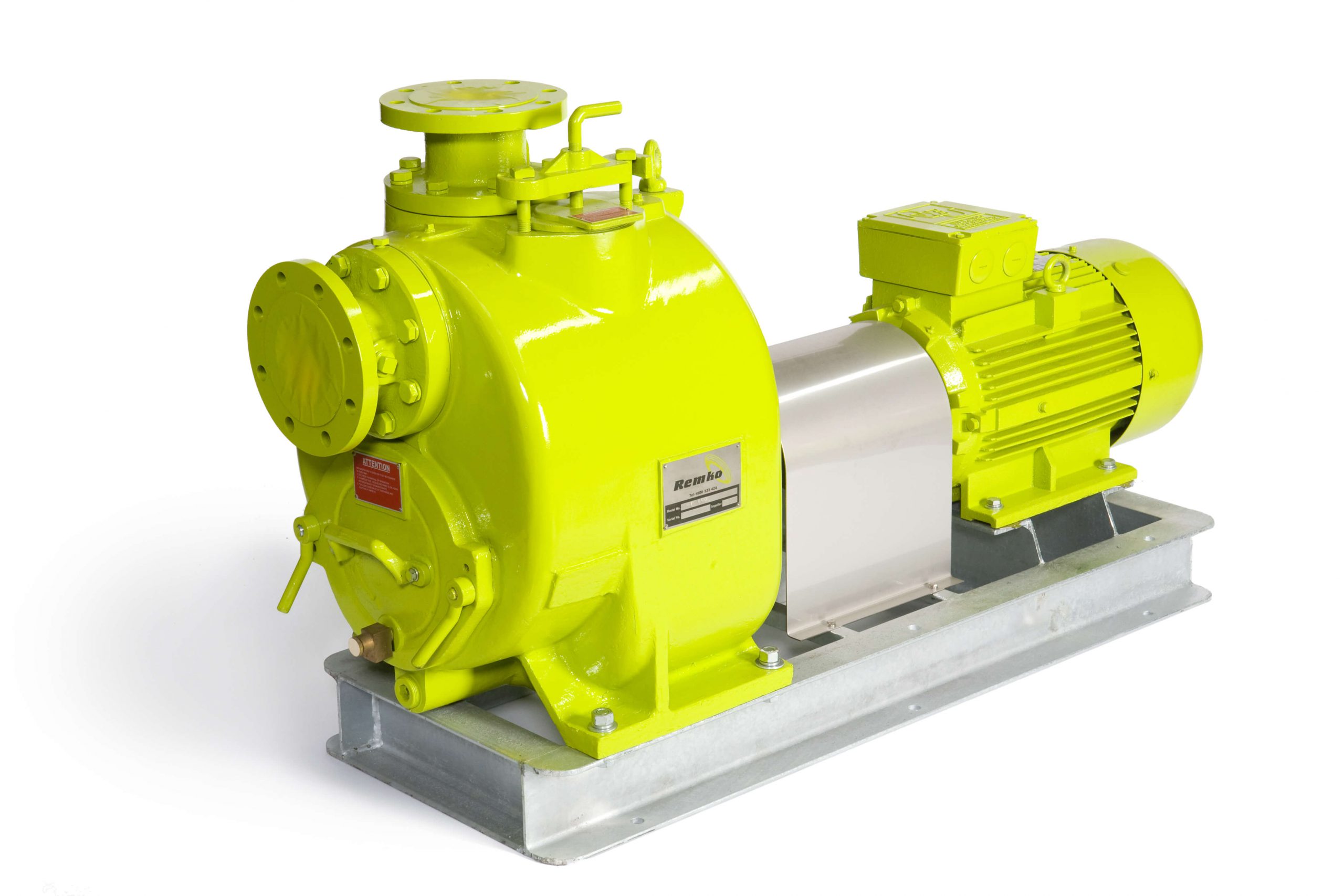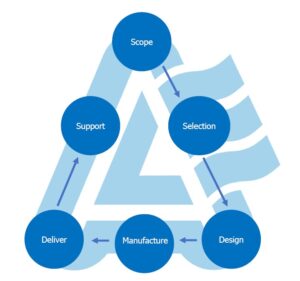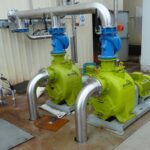Often problems within the pump’s system will give you issues with your actual pump. Your gauges will lead you to the problem:
– A high discharge gauge reading points to a blockage in the discharge line
– A high suction reading points to blockage in the suction line
– A low or no suction gauge points to a suction leak
– A fluctuating suction gauge points to vortexing or some other form of air entrainment
– A low reading on both suction and discharge gauges points to a problem with the pump
Some common troubleshooting issues include:
– Noisy operation
– Pump won’t prime or is slow to prime
– Pump stops or fails to deliver rated flow
– Pump clogs frequently
Noisy operation: The first thing to establish when confronted with a noisy pump is whether the noise is mechanical or hydraulic. To determine this, drain the liquid from the pump casing and run the pump for a short period of time. If the noise is still apparent, the problem is mechanical. Check for loose hardware and bearing noise (both pump and motor).
If the noise has gone, the problem will be hydraulic. It can be cavitation, vortexing or air entrainment.
Cavitation is the most damaging. A dictionary defines cavitation as “the formation of partial vacuums in a flowing liquid as a result of the separation of it parts. When these collapse, pitting or other damage is caused on metals surfaces on contact.” In pumping systems, negative pressure can and will be created in certain areas. If this negative pressure exceeds the vapour pressure of the liquid being pumped, vacuum bubbles form and remain until they migrate through the system and find enough local pressure to cause their collapse. When these vacuum bubbles collapse, the concentrated force of impulsion can exceed 100,000 PSI. If this impulsion occurs next to metal, it is likely to cause a tiny chip to flake off the surface.
Cavitation will sound like the pump has rocks or marbles going through it. The most accurate way to detect cavitation is to take gauge readings (both suction and discharge), obtain an accurate speed (rpm) of the pump shaft, then look at the pump performance curve to determine where the pump is operating. If the suction gauge reading is higher than it should be, the problem will be suction cavitation. The cause could be: blockage in suction line (clear blockage); Suction line too small (increase size of line); suction lift too high (raise the off level or get the pump closer to the water).
If the discharge gauge is reading too high, the pump will be suffering discharge or “tip” cavitation. The discharge line could be blocked (remove blockage), or the discharge line could be too small, or the static head could be too high. These conditions can often be overcome by increasing pump spped, but check gauge readings against manufacturer’s performance curve to determine the correct course of action.
If the suction gauge is fluctuating and the pump is making a growling noise, the problem will be vortexing. This means that the pump is pulling air from the surface of the liquid. Often a whirlpool will form on the surface, but not always. This can be solved by lowering the suction line, increasing the diameter of the suction line inlet (suction “bell”), or lowering the off level.
If the pump won’t prime or is slow to prime, there could be a suction leak. Check this by wrapping cling wrap around each joint. Repair the joint where the cling wrap is “sucked in.” If there is no leak, the suction line may be too long or its diameter too large. These things could possibly be solved by speeding the pump up, reducing the pipe diameter or construction a “P Trap.” Talk to our team at Allflo about this.
If the pump stops or fails to deliver the desired flow, check the gauges. A high suction reading will indicate a blocked or partially blocked suction line. A high discharge gauge reading will indicate a blocked or partially blocked discharge line. If both gauges are low, the pump may need a clearance adjustment or the pump may have a blocked or partially blocked impeller.
If the pump is blocking frequently, check where the pump is operating on its curve. If it is too far left, it may not have the velocity through the pump to avoid blockages. Speed pump up. If the pump is operating at its BEP (best efficiency point), the pump may not be suited to the application. Hard to fix without changing pumps (unless the pump can be upgraded with a solids handling impeller, cutting mechanism or other form of solids handling system) or fitting a strainer to the suction line (which many only move the problem).


























































































